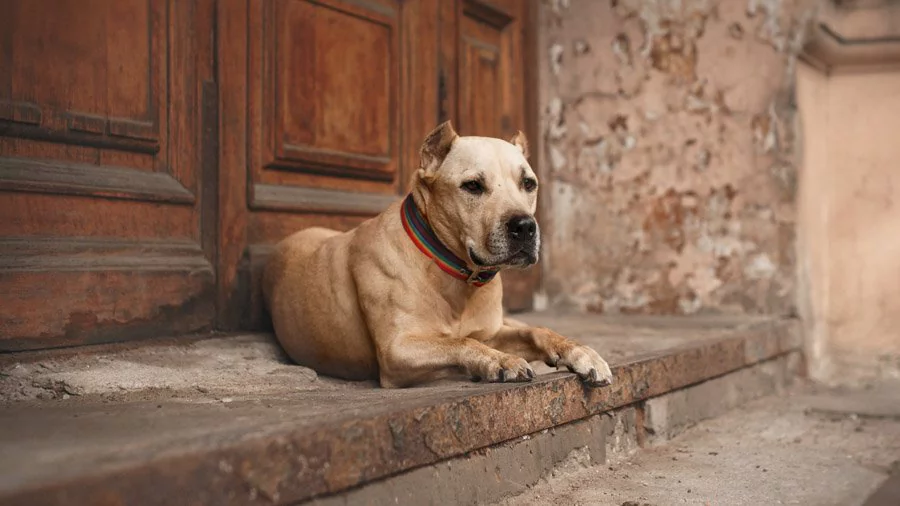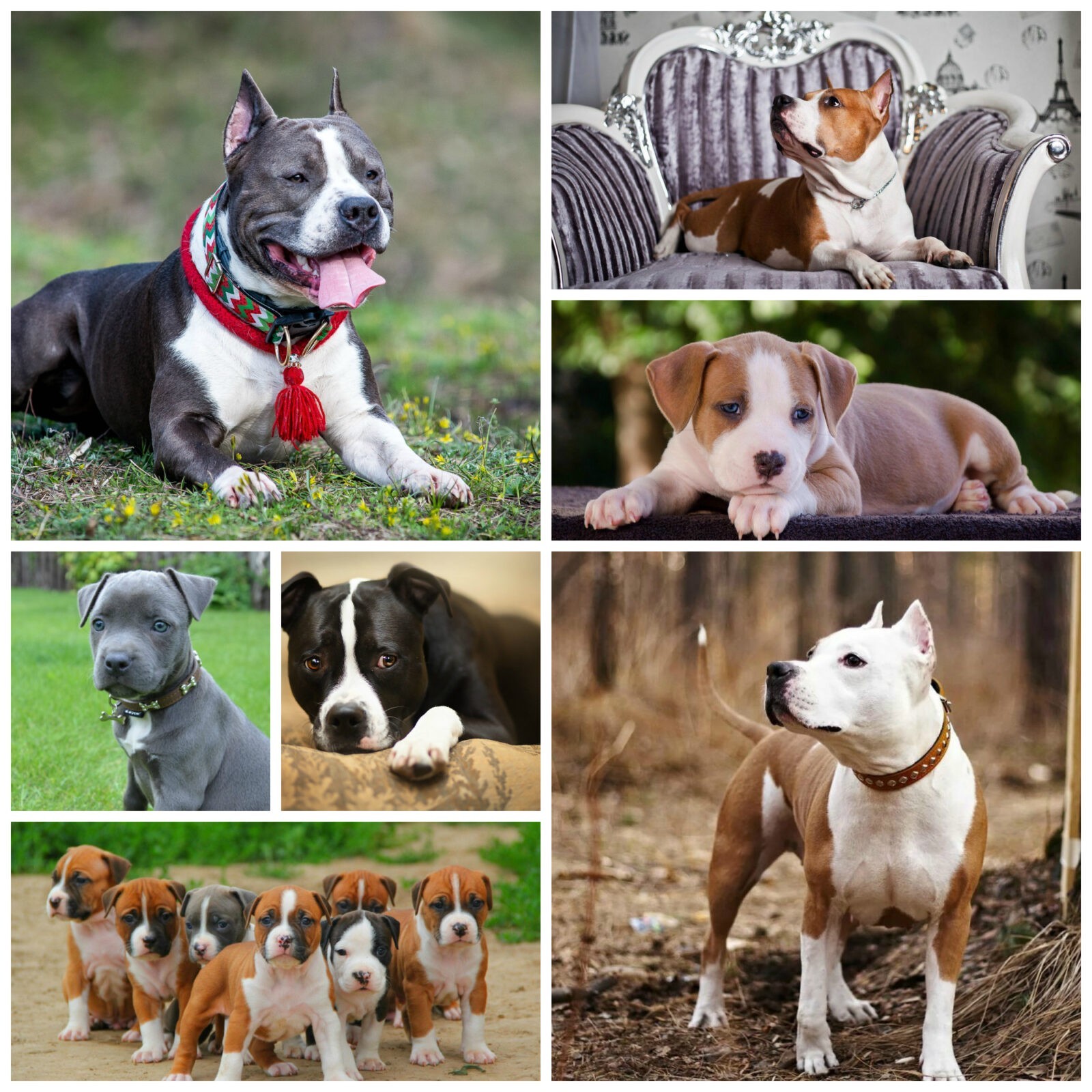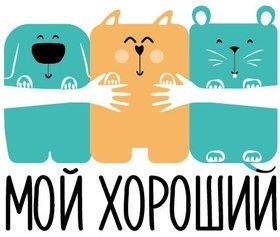
Brief description of the breed American Staffordshire Terrier
Origin of this breed - United States of America, but the breed is popular not only there, in our country there are many breeders and fans of the breed. In fairness, the Amstaffs also have a huge number of opponents. Indeed, in the media you can find information about the Stafford attack on other dogs and even people. Who is to blame for this - the dogs themselves or negligent owners? Probably, the point is the lack of proper education from puppyhood. Connoisseurs of the breed categorically do not advise getting a puppy of the American Staffordshire Terrier to those who cannot properly train the dog and accustom it to life in society. Fighting Staffords, who have a tendency to fearlessness in their blood (and in the absence of proper upbringing and aggression), can bring a lot of grief to others. Whereas a well-bred staff is quite good-natured, calm and devoted to the owners. There are many cases when Staffords became the best friends of their owner's children.
So American Staffordshire Terriers - muscular dogs athletic warehouse. Their head is wide and square. Chewing and parietal muscles are well developed, convex. The transition from the average convexity of the forehead to the muzzle is well expressed. Ears erect, set high (may be docked). The nose is medium in size, mostly black. The eyes are wide apart, rounded, dark in color. Teeth white, large, scissor bite. Amstaff neck without dewlap, muscular, wide at the base, smoothly turning into a strong, short and wide back. In the area of the croup, the back is somewhat sloping towards the bottom. The belly of the Amstaffs is picked up. The tail is set low, not long, tapering towards the tip. The limbs are powerful, straight and very muscular, especially the hind limbs. The coat of the American Staffy is hard, smooth, short, tight. color monophonic - piebald, light and dark brown, black (white color is considered a vice). Brindle and spotted colors are allowed, white color in them should not exceed 20 %.
basic information
| Breed name: | American Staffordshire Terrier |
| Country of origin: | USA |
| The time of the birth of the breed: | 1971 |
| Type of: | terriers |
| The weight: | 20 – 30 kg |
| Height (height at the withers): | 42 - 50 cm |
| Life Expectancy: | 9 – 12 years old |
|
ICF classification:
|
Group 3, Section 3, Number 286 |
| Puppies price: | 100 – 600 $ |
| Most popular nicknames: | list of nicknames for staffordshire terrier |
Evaluation of the characteristics of the American Staffordshire Terrier breed
| Adaptability
(a definition meaning how easily a dog can adapt to changes in life) |
🐶🐶🐶 |
| Shedding level
(Level and frequency of hair loss in the animal) |
🐶🐶 |
| Tenderness level
(The level and amount of tenderness and affection that the dog gives in return for attention to itself) |
🐶🐶🐶🐶🐶 |
| Exercise needs
(Dog's daytime activity level) |
🐶🐶🐶 |
| Social need
(The required number of contacts of the dog with other animals, as well as people) |
🐶🐶🐶🐶 |
| Apartment content
(A factor that determines the level of noise and other inconveniences that a dog can deliver to owners in relation to the size of the apartment to the size of the dog) |
🐶🐶 |
| Grooming
(The number of bathing, brushing, and the number of professional grooming sessions required for the dog) |
🐶 |
| Friendliness in an unfamiliar environment
(Features of the behavior of a dog in a society with strangers or in an unfamiliar environment) |
🐶🐶🐶🐶 |
| Tendency to bark
(Tendency to bark and its frequency and volume) |
🐶🐶🐶 |
| Health issues
(Potential health status of the dog) |
🐶🐶🐶 |
| Territoriality
(The dog's tendency to protect his home, yard, or even his owner's car) |
🐶🐶🐶 |
| Friendliness to cats
(The tendency towards tolerance for cats and decreased manifestation of hunting instincts) |
🐶 |
| Intelligence
(The ability of the dog to think and solve emerging difficulties (not to be confused with learning!) |
🐶🐶🐶🐶 |
| Education and training
(The level of difficulty in training the dog to perform certain actions) |
🐶🐶🐶🐶 |
| Friendliness to children
(A factor that determines how friendly a dog is to children, whether he likes to play with them and tolerate some childish pranks) |
🐶🐶🐶🐶 |
| Game activity
(The concept is determined by its very name, and, as a rule, is found in almost all dogs) |
🐶🐶🐶🐶 |
| Observation
(The ability of a dog to detect the presence of a stranger on its territory) |
🐶🐶🐶 |
| Friendliness to other dogs
(The tendency of the dog to find common language with his other relatives) |
🐶 |
American Staffordshire Terrier photo:

Origins of the American Staffordshire Terrier
Personality of the Staffordshire Terrier
Maintenance and care
Amstaffs are great live like in an apartment, and in an aviary on the territory of suburban and private plots. But it is not recommended to keep them on a chain, it is better when the dog has the opportunity to move freely around the owner's yard. Amstaffs living in apartments are especially in dire need of not only long, but also quite exhausting walks. It's good if the owner can put enough stress on their dog, whether it's catching a ball or going through an obstacle course. When going out into the countryside, Amstaffs happily swim, rush about without a leash and a muzzle (which is impossible in the city).
Amstaff coat care is simple. These animals are brushed several times a week (or at least weekly) with a brush or furminator for short hair. Amstaff shedding occurs in spring and autumn, but can be prolonged if the dog lives in an apartment with excessively dry air. Bathing should be done 2-3 times a year with a special shampoo for dogs.
The owner must always pay attention to the condition of the eyes, ears and teeth of the dog, carrying out hygiene procedures. The ears are cleaned about once a week or two with a cotton pad soaked in water or an earwax breaker. The dog's eyes can be wiped daily or several times a week with a cotton swab dipped in water or any herbal anti-inflammatory decoction that the doctor recommends. It is better to brush your teeth daily by purchasing a dog toothbrush for this (sometimes they use an ordinary “human” brush with medium-hard bristles). In addition, for such thawed dogs as amstaffs, which can provoke a fight with four-legged brethren, you should purchase all the components for a first-aid kit (thermometer, cotton wool, bandage, enema, brilliant green or iodine, adsorbent, laxative, antibiotics and other drugs). The composition of the first aid kit should be consulted with a veterinarian. You should not buy medicines designed for humans.
Training and education of the Staffordshire Terrier
Initially, it can be noted that you should never set an amstaff on people or animals! They train the baby staff from 2-3 months. The puppy should not only be accustomed to life in the house (prohibition to spoil, gnaw things, climb into bed, beg, chase pets, if there are any in the house). It is important to correctly indicate the leadership to the dog, which should always belong only to the owner. Even at an early age, you should not be careless about staff bites or growling at any of the family members (including animals).
Experienced owners note the excellent ability of amstaffs to train. As fast as they are in motion, they quickly grasp the commands presented by the owner or instructor. It is best to conduct training on the training ground, where the staff will observe the training of other dogs. At the same time, the owner himself under the control of an experienced trainer will direct the actions of the dog. Of course, training can take place without the supervision of a specialist, but will the owner have enough experience and knowledge to train the animal on his own? Most often, they choose the General Training Course (OKD) or the UGS course (Managed City Dog). In rare cases, after OKD or UGS, a ZKS course (Protection Guard Service) can be completed.
Health and disease of the Staffordshire Terrier
Some interesting facts
- No breed on the way to official recognition had so many names. In the interval from the end of the 18th century to the middle of the 20th century, American Staffordshire Terriers, in addition to bull and terriers, were called differently: half and half, pit dog, Yankee terrier, Brindle bulldog, American bull terrier, American pit bull terrier. The confusion with the names of the breed ended only in 1936, when the Amstaff became the Staffordshire Terrier.
- The cost of an amstaff puppy starts from 20-25 thousand rubles. Buying a dog from hand can cost the acquirer much less, but it's akin to Russian roulette, when you don't know if you win or not. Often such a purchase is fraught with any hereditary diseases or cowardice, aggression. - severe defects according to the Breed Standard.
Nurseries and breeders
We borrowed material from the wonderful site of our partners DOGCATFAN.COM about cats and dogs, the author dogcatfan
